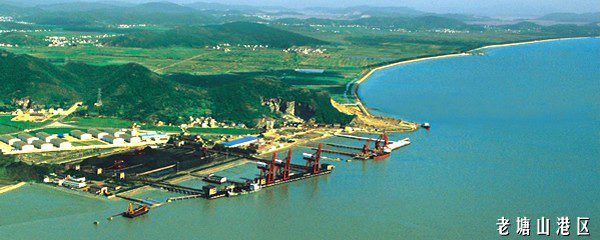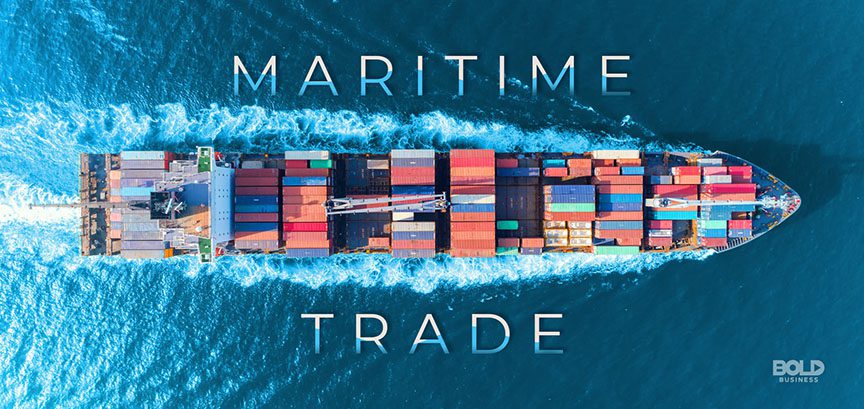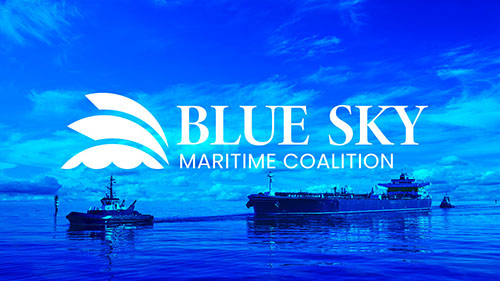1. Port and Terminal Information
1.1 Zhoushan Port operates 24/7, including holidays, but specific terminals may have restricted working hours. Confirm with the terminal operator in advance.
1.2 The main commercial terminals include:
– Zhoushan Port Container Terminal (Max draft: 17.5m, LOA limit: 400m, 6 berths with STS cranes)
– Shulanghu Oil Terminal (Max draft: 25.0m, capable of handling VLCCs up to 300,000 DWT, 3 dedicated berths)
– Ningbo-Zhoushan Port Zhoushan Bulk Terminal (Max draft: 18.2m, equipped with 4×40t unloaders, annual capacity 50 million tons)
– Zhoushan Green Petrochemical Base Terminal (Specialized for chemical tankers, Class I berth certification, vapor recovery systems installed)
– Dinghai General Cargo Terminal (Max draft: 15m, 2 berths for project cargo)
1.3 All terminals require pre-berthing approval from Zhoushan Maritime Safety Administration (MSA) via E-Port system (minimum 24 hours notice).
1.4 Mandatory terminal safety inspections for:
– Oil tankers: Pre-berthing gas detection (LEL <10%)
– Bulk carriers: Hold cleanliness certification (for grain/cement, USDA standards apply)
– Container ships: Lashing bridge inspection certificate
1.5 New regulation (2024): All terminals now require digital gangway monitoring systems for personnel tracking.
2. Navigation and Channel Restrictions
2.1 The main approach channels:
– North Channel (Controlling depth: 22.1m CD, width 350m, two-way traffic for vessels ≤200m LOA)
– South Channel (Controlling depth: 20.5m CD, tidal window required for vessels >18m draft, one-way traffic only)
– West Channel (For vessels <10,000 GT, max draft 12m)
2.2 Mandatory VHF channels:
– Channel 16 (Distress/Safety)
– Channel 08 (Port Operations)
– Channel 71 (Zhoushan VTS)
– Channel 12 (Pilot communication)
2.3 Speed limits:
– 12 knots in inner harbor areas
– 8 knots within 500m of terminals
– 6 knots in narrow fairways (marked on charts)
– 4 knots when passing dredging operations
2.4 Prohibited navigation during:
– Visibility <1,000m (VTS will enforce traffic suspension)
– Typhoon Signal No.8 or above
– Nighttime for vessels >250m LOA in West Channel
2.5 New AIS requirements (2024): All vessels must maintain AIS transmission at 30-second intervals while in port limits.
3. Anchorage Regulations
3.1 Designated anchorages:
– Jintang Anchorage (Max capacity: 30 vessels, mud bottom, depth 20-25m, Category A anchorage)
– Liuheng Anchorage (Emergency use only, rocky bottom, poor holding ground, max stay 48hrs)
– Shulanghu VLCC Anchorage (Special zone for tankers >200,000 DWT, 3 mooring buoys available)
– Putuoshan Temporary Anchorage (For passenger vessels only, prior approval required)
3.2 Anchoring prohibited within:
– 1nm of submarine cables (marked on charts ZH-2018 edition)
– 500m of bridge piers
– 200m of pipeline areas
3.3 MSA requirements:
– 24-hour anchor watch with engine ready (must be recorded in logbook)
– AIS must remain operational (verified by VTS)
– Daily position reports to VTS at 0800LT/2000LT (format: vessel name, position, status)
– Emergency contact number clearly posted on bridge
3.4 New regulation: Anchorage fees now apply for stays exceeding 72 hours (CNY 0.15/GT per day).
4. Pilotage Requirements
4.1 Compulsory pilotage for:
– All foreign-flagged vessels
– Domestic vessels >10,000 GT
– Any vessel carrying Class A hazardous cargo
– Vessels with unusual dimensions (LOA >250m or beam >50m)
4.2 Pilot boarding positions:
– Primary: 29°58’N 122°06’E (Jintang Island area, marked by light buoy No.15)
– Alternate: 29°55’N 122°10’E (Shulanghu approach, day use only)
– Emergency: 30°02’N 122°04’E (NE of Cezi Island)
4.3 Notice requirements:
– VLCCs: 24 hours minimum (plus cargo details)
– Other vessels: 12 hours minimum
– Updates required at 6hr/3hr/1hr prior to ETA (confirmed via VHF Ch.71)
– Last minute changes must be reported immediately
4.4 Pilot ladder standards:
– Strict compliance with SOLAS Reg.23 (2023 amendments)
– Night boarding: Illuminated with 2x60W lights (tested before pilot arrival)
– Alternative arrangements for vessels >15m freeboard (combination ladder required)
4.5 New requirement (2024): Pilot transfer areas must be clearly marked with retro-reflective tape.
5. Cargo Operations
5.1 Hazardous cargo handling:
– IMDG Class 1 explosives: Prohibited
– Class 2.1 gases: Special berth at Shulanghu only (prior fumigation required)
– Class 6.1 toxic substances: Pre-loading inspection required (MSA Form HC-07)
– Radioactive materials: 72 hours advance notice, special handling procedures
5.2 Bulk cargo regulations:
– Grain: Mandatory fumigation certificate (valid for 21 days)
– Coal: Moisture content declaration (IMSBC Code compliance, lab test required for >10% moisture)
– Iron ore: Trim/stability calculations verified by MSA (special checklist for high-density ores)
– Bauxite: Must pass can test if moisture content >10%
5.3 Tanker operations:
– Static electricity bonding mandatory (resistance <10 ohms)
– Cold work permit required for repairs (valid for 8 hours only)
– Maximum loading rate: 12,000m³/hr (VLCCs), 8,000m³/hr (product tankers)
– VOC monitoring continuous during operations
5.4 New regulation: All container ships must submit stowage plans in EDIFACT format 24hrs before arrival.
6. Safety and Emergency
6.1 Port emergency contacts:
– Zhoushan MSA Search and Rescue: +86 580 202 6226 (24hrs, English speaking available)
– Port Fire Brigade: 119 (local call), +86 580 203 0119 (direct line)
– Oil Spill Response Center: +86 580 203 1199 (24hr hotline)
– Medical Emergency: 120 (local), +86 580 202 5120 (port clinic)
6.2 Mandatory equipment:
– Oil terminals: IEC 61508-certified ESD systems (tested monthly)
– Container terminals: Anti-collision fenders (ISO 17357-1, inspected quarterly)
– All berths: SOLAS-approved life-saving appliances at gangway
6.3 Prohibited operations:
– Lifeboat drills alongside (designated training area at 30°01’N 122°05’E)
– Hot work without permit (valid for 4 hours maximum)
– Cargo ops during thunderstorms (lightning within 5nm)
– Unauthorized UAV operations in port area
6.4 New requirement: Monthly emergency drills must include cyber attack scenarios.
7. Environmental Regulations
7.1 Emission controls:
– SECA compliance (max 0.5% sulfur content, fuel samples may be taken)
– Shore power mandatory for container ships >3,000 GT (berth >2hrs, connection within 30mins of arrival)
– NOx Tier III standards apply to vessels built after 2021
7.2 Discharge prohibitions:
– No bilge water discharge in port limits (use reception facilities at all terminals)
– No garbage discharge without approval (Category D only with permit)
– No ballast water exchange within 12nm (must use treatment systems)
– No incineration of waste onboard while in port
7.3 Monitoring requirements:
– Continuous VOC monitoring for tankers (records kept for 3 years)
– Noise levels <75dB at terminal boundaries (measured at 1m height)
– Water quality sampling during bulk operations (for dust suppressant testing)
7.4 New regulation: All vessels >400GT must submit digital environmental compliance report before departure.
Continued in next message…
8. Crew and Documentation
8.1 Crew management:
– Shore leave permitted with valid passports and crew lists (gangway control records required)
– Crew changes require 48hr notice to immigration (including health declarations)
– Medical assistance available at port clinic (24hr service, English speaking doctors)
8.2 Required documents:
– Original IOPP Certificate (with supplement)
– Garbage Management Plan (latest version)
– Crew Vaccination List (yellow fever if applicable, valid stamps required)
– Cargo Securing Manual (for container ships, approved by class society)
– Ballast Water Management Plan (with record book)
8.3 Health protocols:
– Follow latest MSA Notice to Mariners for COVID-19 (currently test required for crew from high-risk areas)
– Medical waste must be incinerated ashore (special containers provided)
– Pest control inspection before departure (certificate valid for 6 months)
8.4 New requirement: All crew must complete port security e-learning module before shore leave.
9. Weather Considerations
9.1 Seasonal hazards:
– Typhoon season (June-October): Mandatory evacuation orders (vessels >10,000 GT must depart when Signal No.8 issued)
– Winter NE monsoon (December-February): Swell >3m at exposed berths (bulk ops suspended when swell >2.5m)
– Spring fog (March-May): 30% probability of visibility <1km (pilotage suspended when visibility <500m)
– Summer thunderstorms (July-August): Frequent lightning (all ops suspended during storms)
9.2 Weather thresholds for operations:
– Wind >Beaufort 7: Bulk cargo ops suspended
– Lightning within 5nm: Tanker ops suspended
– Rainfall >50mm/hour: Container ops suspended
– Temperature >38°C: Special rest periods for dock workers
9.3 New requirement: Vessels must monitor official Zhoushan MSA weather broadcasts (VHF Ch.16 hourly updates).
10. Special Notes for Ship Operators
10.1 Bunkering regulations:
– MSA approval required (48hr notice, including supplier details)
– Maximum transfer rate: 1,000m³/hr (special approval needed for higher rates)
– Mandatory drip trays under all connections
– Continuous fire watch during operations
10.2 Prohibited activities:
– Underwater hull cleaning (special area at 30°05’N 122°08’E only)
– Unauthorized ballast operations (log entries verified by MSA)
– Discharge of grey water without treatment
– Use of open flames on deck (except galley)
10.3 Port charges:
– Calculated by GT + cargo volume (detailed tariff available from port website)
– 15% surcharge for night operations (2200-0600)
– 10% discount for using shore power
– Waste disposal fees based on quantity (separate for oil, garbage, sewage)
10.4 Cybersecurity requirements:
– Mandatory ECDIS updates before entry (verification required)
– Vessel network inspections may be conducted (minimum 2-factor authentication required)
– Critical systems must have offline backups
10.5 New regulation: All vessels must submit digital port clearance request 2hrs before departure.
11. Legal and Compliance
11.1 Reference regulations:
– China Maritime Code (2021 Amendment, Articles 35-78 for port operations)
– MSA Notice No.15 (2023) on Dangerous Goods (latest version 2024-01)
– Zhoushan Port Authority Regulation ZP-2022-04 (amended 2023-09)
– IMO Resolution MSC.460(101) for port safety standards
11.2 Penalties for violations:
– Up to USD 30,000 for environmental breaches (oil spill minimum CNY 100,000)
– Vessel detention for safety non-compliance (minimum 24hrs for critical items)
– Suspension of port privileges for repeated violations (3 strikes within 12 months)
– Criminal liability for deliberate falsification of records
11.3 New regulation: Mandatory compliance training for all ship agents operating in Zhoushan.





